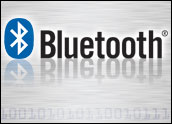
Producers at film studio Dreamworks relied on HP ProLiant servers, using the AMD Opteron processor, when making the new hit movie “Madagascar.” The story concerns animals from a New York City zoo who are resettled to Africa, where they have a hard time coping with life in the wild. “HP helps animators add effects in real-time and render images faster than ever before,” said James Mouton, vice president, platforms, ProLiant servers at Hewlett-Packard.
Though the ProLiant servers have done well for HP, and the company is tied with IBM in the overall server market, HP, like the animated characters in Madagascar, is having a rough time dealing with life in the wilds of the market.
Making Changes
The company last week announced that it was leaving the RISC architecture behind for its other big server line. During a forum in Copenhagen, Denmark late last month, the company talked up a new strategy for its major industry customers, embracing Intel’s Itanium 2 processors. Industry observers indicate that the move will bolster the computing power available to users of HP servers in the future, and give them the ability to better manage legacy IT investments on the same network.
“Enterprises need to ensure continuity for critical business processes to control the IT infrastructure and consolidate IT resources,” said Nora Denzel, a senior vice president at HP.
The new servers, Integrity Non-Stop high-end Itanium-based servers, signify the official end of the proprietary RISC line of chips for Unix servers. The servers will be available in July. The new processor will provide a 16 percent boost in performance, and is said to complete HP’s new server strategy roadmap.
IDC research, based in Framingham, Mass., calls the new servers the “successor platform” for HP.
Risky Move
But the move is being perceived as too risky for HP by many, who wonder why the company would risk so much on a new strategy when it is doing so well with its current one.
The global server market increased 5.3 percent during the first quarter of this year, according to IDC’s Worldwide Quarterly Server Tracker report. Sales of servers were US$12.1 billion during the quarter. Unix and Windows servers alike “have a rich inventory of ISV applications, but Unix servers have traditionally gained more revenue from sales in the midrange enterprise and high-end enterprise server segments, based on their ability to support more scalable workloads,” said the report by IDC analyst Jean Bozman.
HP is in a virtual statistical tie with IBM for leadership of the server market — with IBM reporting $3.4 billion in revenues and HP reporting $3.3 billion in revenues for the quarter, each grabbing 28.3 percent of the market and 27.6 percent, respectively, IDC reported. Dell and Sun were the runners-up in server sales for the quarter.
Interestingly, Hewlett-Packard led in the total number of servers shipped, with a 30.4 percent share of the market, with Dell in second place, at 24.5 percent of the market. But Hewlett-Packard’s servers are priced less expensively than IBM’s, giving Big Blue the greater share of revenues. These mid-range servers are priced from $25,000 to $499,999.
A possible hint as to why HP may, at this time, be shifting its server strategy is that Windows servers may be gaining market share at the expense of Unix servers in the enterprise, experts said. Windows ran even with Unix servers for the first time during the first quarter, netting 34.4 percent of all revenue for server sales, and growing 12.3 percent year-to-year, according to IDC.




















































